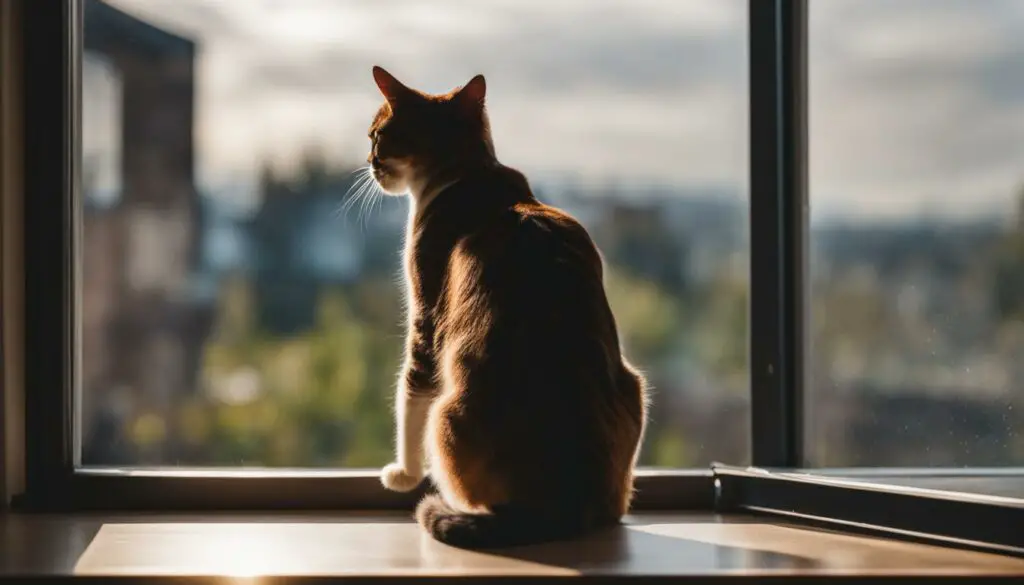As a cat owner, it’s easy to assume that indoor cats don’t need regular veterinary care since they are protected from outdoor hazards. However, this couldn’t be further from the truth. Even indoor cats can be exposed to various health risks, including fleas, heartworms, and viruses. Regular visits to the vet are essential for maintaining your indoor cat’s overall health and well-being.
Key Takeaways:
- Indoor cats can be exposed to fleas, heartworms, intestinal parasites, and deadly viruses.
- Regular vet visits help identify potential health issues early on and ensure optimal feline health.
- Preventive care, including vaccinations and parasite control, is crucial for indoor cats.
- Veterinary check-ups provide valuable insights into cat behavior, nutrition, and dental care.
- Proper weight management, dental health, grooming, and exercise are essential for indoor cats.
The Importance of Preventive Care for Indoor Cats
Preventive care is crucial for the health and well-being of indoor cats. While they may not have the same level of exposure to outdoor risks as outdoor cats, they can still be susceptible to diseases and parasites. Regular preventive care visits to the vet can help ensure that indoor cats stay healthy and protected.
Preventive Measures
One important aspect of preventive care for indoor cats is vaccinations. Vaccines can protect cats against potentially deadly viruses, such as panleukopenia and rabies. Even though indoor cats have lower exposure to these viruses, they can still be at risk if they come into contact with humans or other animals that may carry the disease.
Parasite control is another vital part of preventive care. Indoor cats can still be exposed to fleas and heartworm-carrying mosquitos through screen windows and doors. They can also contract intestinal parasites by ingesting bugs or mice that enter the house. Regular preventive treatments recommended by the veterinarian can help keep these parasites at bay.
Early Detection and Treatment
Regular visits to the vet for preventive care also allow for early detection of any potential health issues. Cats are masters at hiding signs of illness, and by the time symptoms become noticeable, the disease may have progressed. During preventive care visits, the vet can perform a thorough examination and identify any underlying issues before they become serious.
By focusing on preventive care, cat owners can take proactive steps to keep their indoor feline companions healthy and happy. Vaccinations, parasite control, and regular vet visits play a crucial role in preventing diseases and detecting any problems early on, ensuring a longer and higher quality of life for indoor cats.
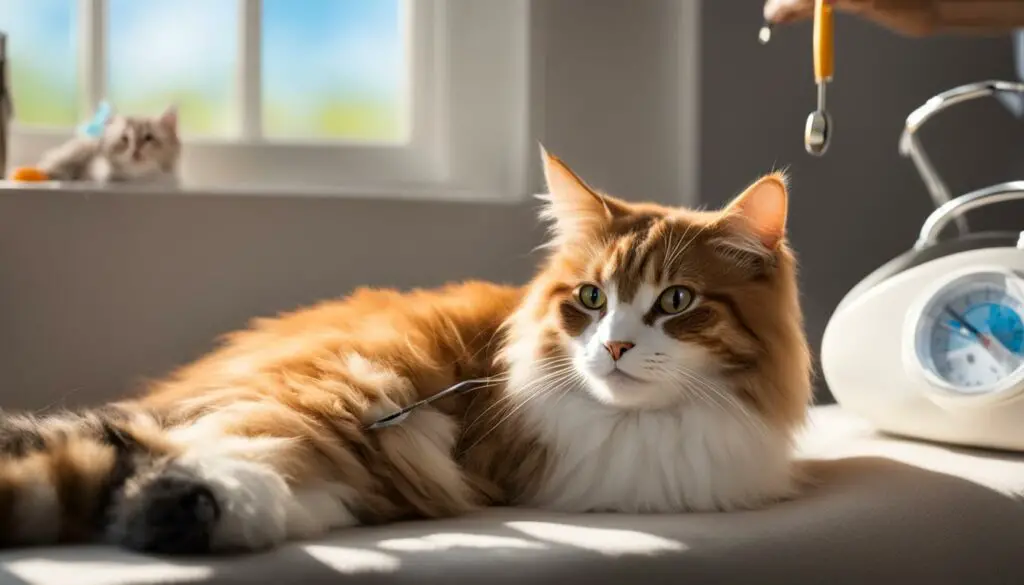
| Benefits of Preventive Care for Indoor Cats | Preventive Measures |
|---|---|
| 1. Protection against deadly viruses | – Vaccinations |
| 2. Prevention of flea and heartworm infestation | – Parasite control |
| 3. Early detection of health issues | – Regular vet visits and examinations |
| 4. Improved overall well-being | – Proactive healthcare |
The Value of Regular Veterinary Check-ups
Regular veterinary check-ups play a vital role in ensuring the overall health and well-being of our beloved feline companions. These check-ups provide an opportunity for a thorough assessment of a cat’s physical condition, allowing veterinarians to identify any potential health issues early on. During a check-up, the veterinarian will examine various aspects of the cat’s health, including coat quality, muscle mass, and any abnormalities in the abdomen. This comprehensive evaluation helps in monitoring the cat’s wellness and taking preemptive measures to maintain their optimal health.
Aside from the physical examination, veterinary check-ups also offer valuable advice on cat behavior, nutrition, and dental care. Veterinarians can provide insights into behaviors that might indicate underlying health problems or stress. They can recommend proper nutrition tailored to the cat’s specific needs, ensuring an appropriate diet that supports their overall well-being. Moreover, veterinarians can offer guidance on dental care, emphasizing the importance of regular teeth cleaning and check-ups to prevent dental diseases and maintain good oral health.
“Regular veterinary check-ups are essential for monitoring a cat’s overall health and identifying any potential issues. During a check-up, a veterinarian can assess a cat’s physical condition, including coat quality, muscle mass, and any abnormalities in the abdomen.”
By attending regular veterinary check-ups, cat owners can stay informed about their feline companion’s health status and take proactive measures to address any emerging concerns. Early detection of diseases and prompt treatment can lead to better outcomes for cats, enhancing their quality of life and extending their lifespan. Furthermore, regular veterinary check-ups foster a strong bond between the cat, the owner, and the veterinarian, creating a supportive network that ensures the best possible care for our beloved feline friends.
Summary:
Regular veterinary check-ups are an essential part of cat healthcare, allowing veterinarians to monitor a cat’s physical condition, provide valuable advice on behavior, nutrition, and dental care. These check-ups promote early detection of diseases and timely treatment, ensuring better outcomes for cats. By attending regular check-ups, cat owners can stay informed about their feline companion’s health status and strengthen the bond between themselves, their cat, and the veterinarian.
| Benefits of Regular Veterinary Check-ups | Actions Required |
|---|---|
| Early detection of diseases | Schedule regular check-ups and follow veterinarian’s recommendations for diagnostics. |
| Monitoring overall health | Attend check-ups to have the cat’s physical condition assessed, including coat quality, muscle mass, and abdomen abnormalities. |
| Valuable advice on cat behavior | Discuss any behavioral concerns with the veterinarian for guidance and potential solutions. |
| Nutrition and dietary recommendations | Seek veterinarian’s advice on proper nutrition tailored to the cat’s individual needs. |
| Dental care guidance | Follow veterinarian’s recommendations on regular teeth cleaning and check-ups to maintain good oral health. |
The Role of Veterinary Examinations in Cat Health
Regular veterinary examinations play a crucial role in maintaining the overall health of cats. These examinations help detect early signs of diseases, especially in aging and senior cats, and ensure that they receive the care they need. Through a thorough examination, veterinarians can assess a cat’s physical condition, including coat quality, muscle mass, and any abnormalities in the abdomen. Additionally, regular eye examinations can help identify any issues with vision or eye health.
As cats age, the risk of certain diseases and conditions increases, making regular veterinary examinations even more important. Conditions such as kidney disease and hyperthyroidism can often be detected early through a comprehensive examination, allowing for prompt treatment and better management of these conditions. By detecting and addressing health issues early on, veterinarians can help improve the overall quality of life for senior cats.
The role of veterinary examinations in cat health is not limited to disease detection. These examinations also provide an opportunity for veterinarians to discuss and provide valuable advice on topics such as cat aging, senior care, and eye care. With their expertise, veterinarians can guide cat owners in providing the best possible care and support for their feline companions.
The Importance of Regular Veterinary Examinations:
- Early detection of diseases
- Prompt treatment and management of health issues
- Assessment of overall physical condition
- Identification of eye health issues
- Guidance on cat aging and senior care
It is recommended to schedule regular veterinary examinations for cats, especially as they age. These examinations provide a comprehensive picture of a cat’s health and allow for appropriate interventions to be implemented in a timely manner. By prioritizing veterinary examinations, cat owners can ensure that their feline companions receive the necessary care and attention to live long, healthy lives.
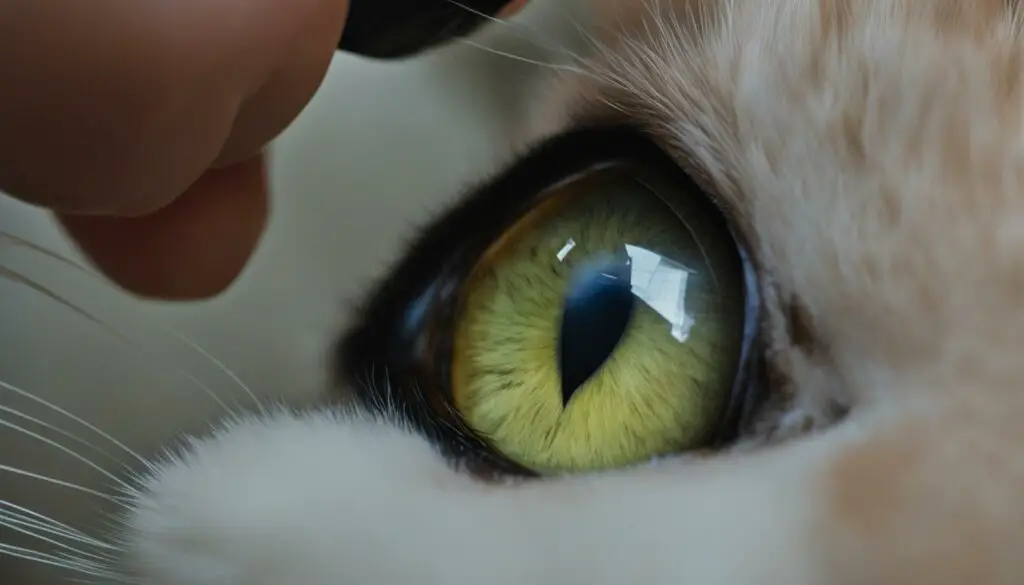
The Impact of Proper Weight Management on Cat Health
Proper weight management is crucial for maintaining optimal health in cats. Obesity in cats can lead to various health problems, including diabetes, arthritis, and heart disease. It is important to monitor your cat’s weight and ensure they maintain a healthy body condition.
One key aspect of weight management is providing a balanced and nutritious diet for your cat. Consult with your veterinarian to determine the appropriate type and amount of food for your cat’s specific needs. Avoid overfeeding and limit the consumption of treats or table scraps, as these can contribute to weight gain.
Regular exercise is also essential for maintaining a healthy weight in cats. Engage your cat in interactive play sessions to encourage physical activity. Provide toys that stimulate their natural hunting instincts, such as feather toys or laser pointers. Cats also enjoy climbing and exploring, so consider providing a cat tree or creating vertical spaces for them to exercise and play.
In addition to a healthy diet and regular exercise, it is important to monitor your cat’s weight and body condition. Use a body condition scoring system to assess their overall body condition and make adjustments to their diet and exercise routine as needed. Regular veterinary check-ups can also help track your cat’s weight and ensure they are on the right track to maintaining a healthy weight.
By implementing proper weight management practices, you can help prevent obesity-related health issues and promote overall wellness in your cat.
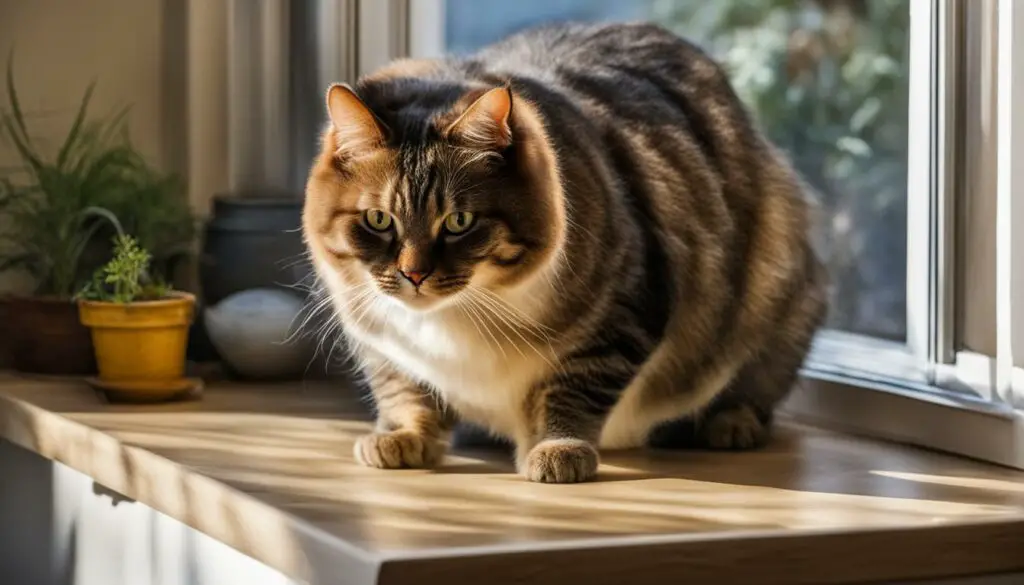
The Effects of Cat Obesity
Cat obesity can have serious consequences on a cat’s health, including an increased risk of diabetes, arthritis, and heart disease. Excess weight puts additional strain on their joints, leading to pain and decreased mobility. It can also affect their overall quality of life and reduce their lifespan.
Weight Management Tips for Cats
- Consult with your veterinarian to determine your cat’s ideal weight and body condition.
- Measure and portion your cat’s food according to their dietary needs.
- Avoid free-feeding and establish regular feeding times.
- Engage your cat in daily play sessions to encourage exercise.
- Create a stimulating environment with climbing structures and interactive toys.
- Monitor your cat’s weight and body condition through regular check-ups.
Remember, maintaining a healthy weight is essential for your cat’s overall well-being. With proper weight management, you can help your cat live a happier and healthier life.
The Importance of Cat Dental Health
When it comes to keeping our feline friends healthy, dental care is often overlooked. However, cat dental health plays a significant role in their overall well-being. Just like humans, cats can develop dental diseases such as gum inflammation, tooth decay, and periodontal disease. These conditions can cause pain and discomfort, leading to a decreased quality of life for our beloved pets.
To maintain optimal cat dental health, regular dental care is essential. This includes routine brushing of your cat’s teeth with a feline-specific toothbrush and toothpaste. Brushing should be done daily, if possible, to remove plaque and prevent tartar buildup. Additionally, providing dental treats or toys designed to help clean your cat’s teeth can be beneficial.
If your cat’s dental health has been neglected or if you notice any signs of dental disease such as bad breath, drooling, or difficulty eating, it’s essential to consult with a veterinarian. They can perform a thorough dental examination, including dental X-rays if necessary, to assess your cat’s oral health. In some cases, a professional dental cleaning under anesthesia may be required to address any existing dental issues and prevent further damage.
| Dental Care Tips for Cats |
|---|
| 1. Brush your cat’s teeth daily with a feline-specific toothbrush and toothpaste. |
| 2. Provide dental treats or toys designed to promote oral health. |
| 3. Schedule regular dental check-ups with a veterinarian. |
| 4. Seek veterinary care if you notice any signs of dental disease. |
By prioritizing cat dental care, we can help our cats maintain healthy teeth and gums, preventing potential dental diseases and improving their overall well-being.

The Impact of Neglected Dental Health
Neglected dental health can have serious consequences for cats. Dental diseases can lead to pain, difficulty eating, and even systemic health issues. Bacteria from dental infections can enter the bloodstream and affect the heart, liver, and kidneys, compromising your cat’s overall health.
According to the American Veterinary Dental Society, about 70% of cats show signs of dental disease by the age of three. Dental disease is one of the most common issues seen in cats, and it is largely preventable with proper dental care.
Regular dental care, including brushing your cat’s teeth and regular veterinary check-ups, is crucial for preventing and addressing dental diseases. By making dental care a priority, you can ensure that your cat enjoys a healthy and pain-free mouth, leading to a happier and more vibrant life.
Cat Grooming and Its Benefits
Grooming is an important aspect of cat care, as it not only helps maintain their physical appearance but also promotes their overall health and well-being. Regular grooming sessions provide an opportunity to check for any skin issues, keep the coat clean and free from mats, and ensure that the ears and eyes are in good condition. Let’s take a closer look at the various aspects of cat grooming and the benefits it offers:
1. Cat Skin Care:
Cats have sensitive skin that requires proper care. Regular brushing helps stimulate blood flow to the skin, distribute natural oils, and prevent matting. It also allows pet owners to check for any signs of parasites, such as fleas or ticks, and detect any skin irritations or abnormalities early on. If any issues are found, prompt veterinary attention can be sought to prevent further complications.
2. Cat Ear Care:
Cleaning a cat’s ears is essential to prevent ear infections and maintain ear health. Cats are prone to ear mites and wax buildup, which can lead to discomfort and hearing problems. Gently wiping the outer ear with a damp cloth or using specially formulated ear cleaners recommended by a veterinarian helps remove dirt, debris, and excess wax, ensuring that the ears stay clean and infection-free.
3. Cat Eye Care:
Cats have delicate eyes that require regular care to prevent infections and eye diseases. Cleaning the area around the eyes with a damp cloth helps remove any discharge or debris that may accumulate. Additionally, keeping the fur around the eyes trimmed prevents irritation and reduces the risk of eye infections. If any signs of redness, swelling, or discharge are noticed, it is important to consult a veterinarian for a thorough eye examination.
Regular grooming sessions not only help maintain a cat’s physical well-being but also provide an opportunity for owners to bond with their feline companions. It is important to approach grooming with patience and gentleness, allowing the cat to become accustomed to the process gradually. For cats that may be resistant to grooming, seeking the assistance of a professional groomer or consulting with a veterinarian can be beneficial.

In summary, cat grooming plays a crucial role in maintaining a cat’s health and happiness. By incorporating regular skin care, ear care, and eye care into their grooming routine, cat owners can help prevent potential issues and ensure that their feline friends look and feel their best.
The Importance of Spaying and Neutering Indoor Cats
Spaying and neutering are essential procedures for indoor cats, regardless of whether they have access to the outdoors or not. These procedures offer numerous benefits for both the cat’s behavior and overall health.
When a female cat is spayed, her reproductive organs are surgically removed, eliminating the risk of uterine infections and reducing the chances of developing breast tumors. Spaying also prevents unwanted pregnancies and reduces the number of homeless cats in the community.
Neutering a male cat involves the removal of his testicles, which not only eliminates the risk of testicular cancer but also reduces the urge to roam, mark territory, and engage in aggressive behaviors. Neutering can also significantly decrease the likelihood of spraying, a common issue among intact male cats.
Additionally, spaying and neutering indoor cats can contribute to a calmer and more relaxed household environment. Hormonal changes associated with intact cats can lead to behavioral problems such as aggression and excessive vocalization. By spaying or neutering our feline companions, we can help reduce these unwanted behaviors and promote a harmonious relationship with our pets.
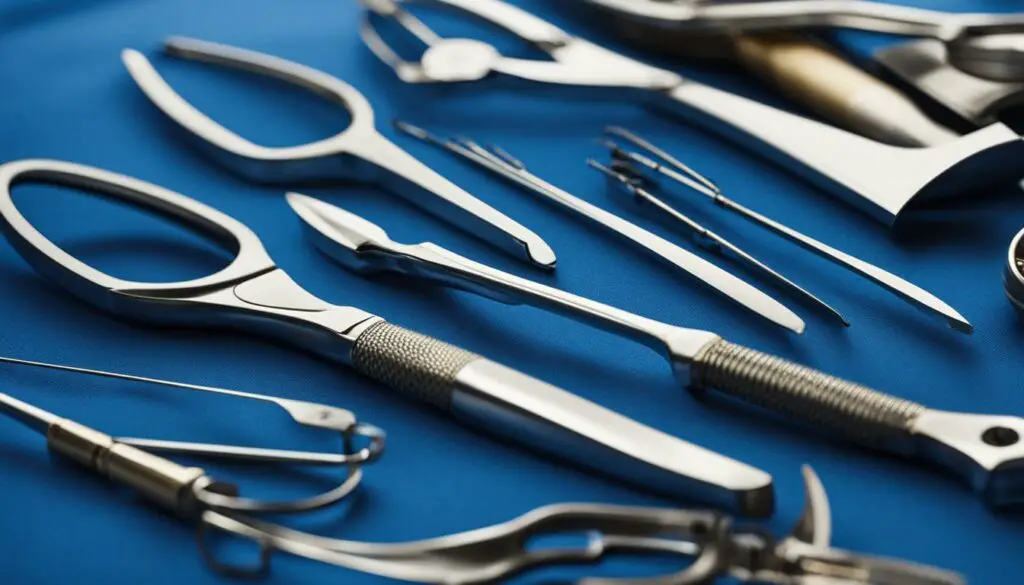
It’s important to note that spaying and neutering should be performed by a qualified veterinarian. The procedures are typically done under anesthesia to ensure the safety and comfort of the cat. Recovery time is usually relatively short, and post-operative care instructions should be followed to minimize any potential complications.
The Benefits of Spaying and Neutering Indoor Cats:
- Elimination of the risk of uterine infections in female cats
- Reduction in the chances of developing breast tumors in female cats
- Prevention of testicular cancer in male cats
- Decrease in the urge to roam, mark territory, and engage in aggressive behaviors in male cats
- Reduction in the likelihood of spraying in male cats
- Contribution to a calmer and more relaxed household environment
“Spaying and neutering indoor cats not only offers health benefits but also contributes to a more harmonious relationship with our feline companions.”
By opting to spay or neuter our indoor cats, we can provide them with a healthier and happier life. These procedures not only prevent certain health issues but also promote better behavior and a more relaxed environment within our homes.
Essential Tips for Cat Litter Box Training
Proper litter box training is a crucial aspect of caring for your indoor cat. By providing a clean and accessible litter box, you can help ensure proper hygiene and prevent accidents in your home. Here are some essential tips to help you successfully train your cat:
- Choose the right litter box: Select a litter box that is large enough for your cat to comfortably turn around and dig in. Avoid covered litter boxes, as they can trap odors and make your cat feel confined.
- Use the right litter: Cats have preferences when it comes to litter. Experiment with different types, such as clay, clumping, or natural alternatives, to find the one your cat prefers. Fill the litter box with enough litter to allow for digging and covering waste.
- Place the litter box in a quiet location: Cats prefer privacy when using the litter box. Choose a quiet and low-traffic area of your home to place the litter box. Avoid placing it near noisy appliances or in areas where your cat may feel vulnerable.
- Keep the litter box clean: Scoop the litter box daily to remove waste and clumps. Regularly replace the litter and clean the litter box with mild soap and water to maintain cleanliness and minimize odors.
- Address litter box problems promptly: If your cat starts avoiding the litter box or exhibiting unusual behavior, it may indicate a problem. Consult with your veterinarian to rule out any underlying medical conditions and address any behavioral issues.
Remember, consistency and patience are key when it comes to litter box training. With time and positive reinforcement, your cat will learn to use the litter box consistently, ensuring a clean and stress-free environment for both you and your feline companion.
Common Litter Box Problems
While most cats take to litter box training easily, some may experience difficulties or develop problems over time. Here are some common litter box problems and their possible solutions:
| Problem | Solution |
|---|---|
| Urinating outside the litter box | Ensure the litter box is clean and accessible. Consider adding additional litter boxes in different locations. Rule out any medical conditions that may be causing the behavior. |
| Defecating outside the litter box | Check the litter box size and cleanliness. Provide a separate litter box specifically for defecation. Consult with your veterinarian to rule out any underlying medical issues. |
| Avoiding the litter box altogether | Assess the litter box location, size, and cleanliness. Experiment with different types of litter. Consult with your veterinarian to rule out any medical conditions that may be contributing to the behavior. |
| Overly anxious or stressed during litter box use | Create a calm and quiet environment for the litter box. Consider using pheromone sprays or diffusers to reduce anxiety. Consult with your veterinarian for additional guidance. |
Remember, it’s important to be patient and understanding when addressing litter box problems. Punishment or scolding can create further anxiety and worsen the issue. Consult with your veterinarian for personalized advice and guidance.
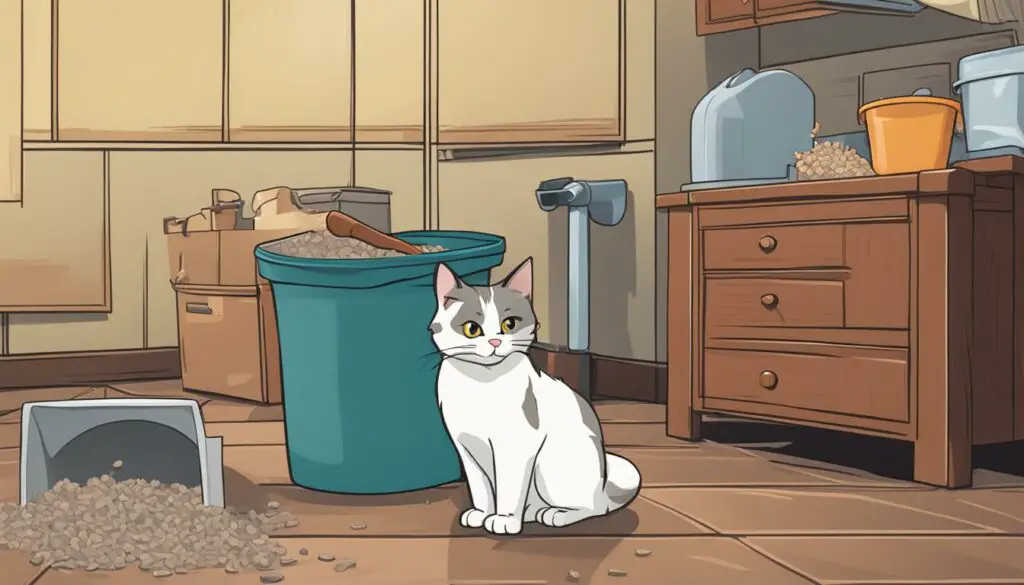
Understanding the Benefits of Cat Microchipping
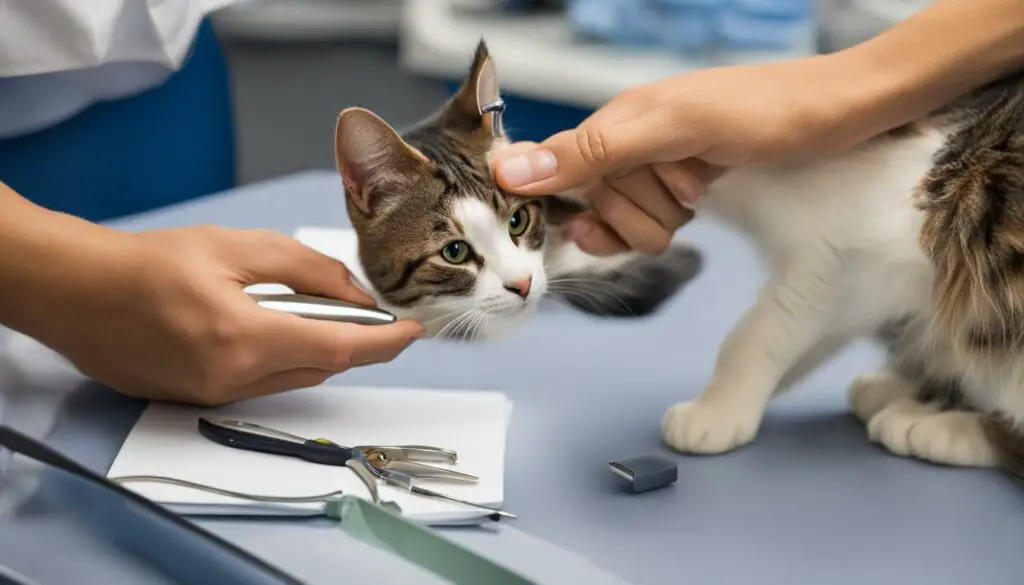
When it comes to keeping our beloved feline friends safe, cat microchipping is a valuable tool that every cat owner should consider. A microchip is a small device, about the size of a grain of rice, that is inserted under the cat’s skin. It contains a unique identification number that can be scanned by animal shelters or veterinary clinics to retrieve the owner’s contact information. This simple procedure can make all the difference in reuniting a lost cat with its owner.
The benefits of cat microchipping are numerous. Unlike collars and tags, which can easily be lost or removed, a microchip provides a permanent form of identification. This is especially important for indoor cats who may accidentally escape or get lost. With a microchip, the chances of a cat being identified and returned home safely are significantly increased.
“Cat microchipping is a reliable and permanent method of identification that ensures lost cats can be easily reunited with their owners.”
In addition to aiding in the safe return of lost cats, microchipping also plays a crucial role in cat safety. With a unique identification number linked to the owner, a microchip can help prevent cats from being mistaken for strays or being wrongfully adopted. It provides peace of mind knowing that if your cat ever ends up in an animal shelter or veterinary clinic, their true ownership can be easily verified.
The Benefits of Cat Microchipping:
- Permanent form of identification
- Increased chances of reuniting lost cats with their owners
- Prevents mistaken identity or wrongful adoption
Overall, cat microchipping offers an invaluable layer of protection for our cherished feline companions. It is a safe and effective method of identification that provides peace of mind and enhances cat safety. Whether your cat is strictly indoors or occasionally ventures outside, microchipping is a small investment that can make a big difference in their well-being.
| Benefits of Cat Microchipping | |
|---|---|
| Permanent form of identification | Increased chances of reuniting lost cats with their owners |
| Prevents mistaken identity or wrongful adoption |
The Importance of Regular Cat Vaccinations
Vaccinations are a crucial aspect of maintaining your cat’s health and well-being. By ensuring that your pet receives regular vaccinations, you can help protect them from a range of infectious diseases. Vaccines work by stimulating the immune system to produce an immune response, providing immunity against specific viruses or bacteria.
Regular cat vaccinations are especially important for indoor cats, as they can still be exposed to diseases carried by insects or transmitted by humans. Even if your cat doesn’t have direct contact with other animals, it’s essential to remember that viruses can be brought into your home on clothing or shoes. Additionally, in the event that your indoor cat accidentally escapes outside, they may come into contact with infected animals or surfaces.
It’s crucial to follow the vaccination schedule recommended by your veterinarian. The vaccination protocol may vary based on factors such as your cat’s age, lifestyle, and overall health. Common cat vaccinations include those for diseases such as rabies, panleukopenia, herpesvirus, and calicivirus.
| Vaccine | Frequency | Protection Against |
|---|---|---|
| Rabies | Every 1-3 years, as required by local regulations | Rabies virus, which can be transmitted to humans |
| Panleukopenia | Every 3 years, or as recommended by the veterinarian | Feline panleukopenia virus |
| Herpesvirus | Every 1-3 years, or as recommended by the veterinarian | Feline herpesvirus type 1 |
| Calicivirus | Every 1-3 years, or as recommended by the veterinarian | Feline calicivirus |
I can’t stress enough the importance of regular cat vaccinations. Not only do they protect your furry friend from potentially life-threatening diseases, but they also contribute to the overall health and well-being of your pet. It’s crucial to consult with your veterinarian to determine the appropriate vaccination schedule for your cat based on their individual needs and risk factors. Remember, prevention is always better than cure when it comes to your cat’s health.
By prioritizing regular cat vaccinations, you are taking a proactive approach to your cat’s health and ensuring their protection against preventable diseases. Consult with your veterinarian to develop a vaccination plan tailored to your cat’s specific needs. Remember, a healthy and happy cat starts with proper vaccination.
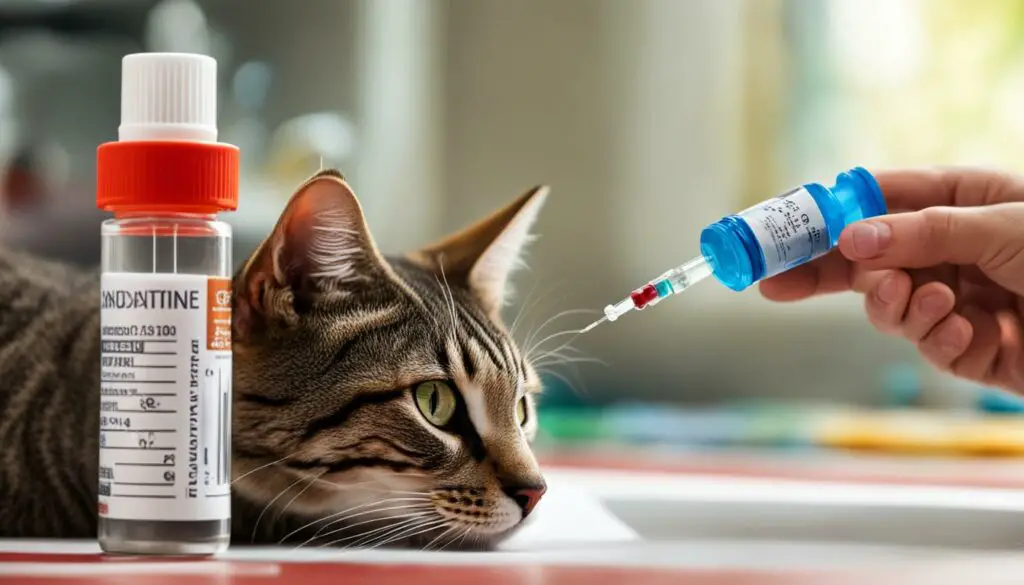
The Role of Play and Exercise in Cat Health
Play and exercise are crucial for maintaining a cat’s physical and mental well-being. Regular play sessions and exercise help cats stay active, burn calories, and maintain a healthy weight. It also provides mental stimulation and prevents boredom, which can lead to behavioral issues.
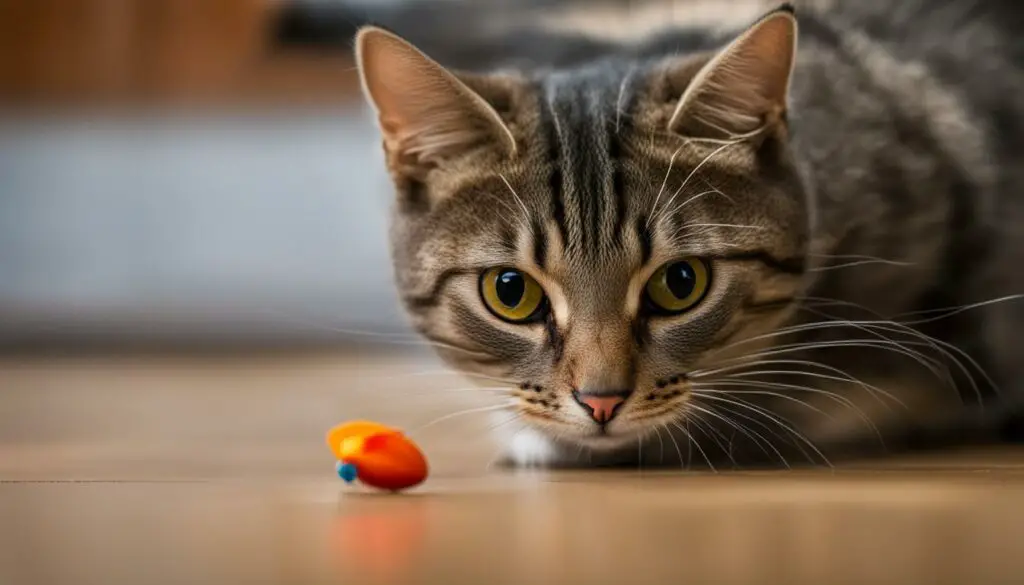
Interactive toys are a great way to engage cats in play and exercise. Toys that simulate hunting and chasing behaviors, such as feather wands and laser pointers, can help cats release energy and satisfy their natural instincts. Puzzle toys and treat-dispensing toys encourage mental stimulation and provide entertainment.
Creating an enriched environment is also essential for promoting exercise and play. Providing climbing structures, scratching posts, and hiding spots allows cats to explore and engage in physical activities. It’s important to rotate toys regularly to keep cats interested and offer a variety of play options.
| Benefits of Play and Exercise |
|---|
| 1. Physical fitness and weight management |
| 2. Mental stimulation and stress relief |
| 3. Prevention of behavioral problems |
| 4. Bonding between cats and their owners |
It’s important to note that the amount of play and exercise needed may vary depending on the cat’s age, breed, and overall health. Consult with a veterinarian to determine an appropriate exercise routine and address any specific needs or concerns.
Managing Stress and Anxiety in Indoor Cats
Stress and anxiety can have a significant impact on a cat’s behavior and overall health. As responsible pet owners, it’s essential to understand the signs of stress and anxiety in our indoor feline companions and take steps to manage and alleviate these issues.
Cats may experience stress and anxiety due to various factors, such as changes in their environment, lack of stimulation, or fear of specific stimuli. Common signs of stress and anxiety in cats include excessive grooming, hiding, aggression, inappropriate elimination, and changes in appetite. If you notice any of these behaviors in your cat, it’s important to address the underlying causes and provide them with a supportive and stress-free environment.
Creating a Stimulating Environment
An enriched environment can play a crucial role in reducing stress and anxiety in indoor cats. Providing plenty of opportunities for play, exploration, and mental stimulation can help keep cats engaged and satisfied. Interactive toys, scratching posts, and climbing structures can help fulfill a cat’s natural instincts and provide them with outlets for their energy. Additionally, rotating toys and providing different types of environmental enrichment can prevent boredom and promote a sense of security.
Creating safe spaces for cats to retreat to when they feel overwhelmed is also important. These spaces can include cozy beds, cat trees, or designated hiding spots. Ensuring that there are multiple litter boxes and food/water stations throughout the house can also help reduce stress by providing cats with easy access to essential resources.
Calming Products and Techniques
If your cat’s stress and anxiety persist despite environmental enrichment, there are various calming products and techniques that you can try. Pheromone sprays or diffusers, such as Feliway, release synthetic pheromones that mimic the natural calming signals produced by cats. These products can help create a sense of security and reduce stress-related behaviors.
Another technique to consider is creating a routine for your cat. Cats thrive on predictability, so establishing a consistent schedule for feeding, playtime, and cuddling can help reduce anxiety. Additionally, providing a quiet and peaceful environment with soft music or white noise can help create a calming atmosphere for your cat.
If your cat’s stress and anxiety persist or worsen despite your efforts, it’s important to consult with a veterinarian. They can assess your cat’s behavior, rule out any underlying medical conditions, and provide additional guidance and support.
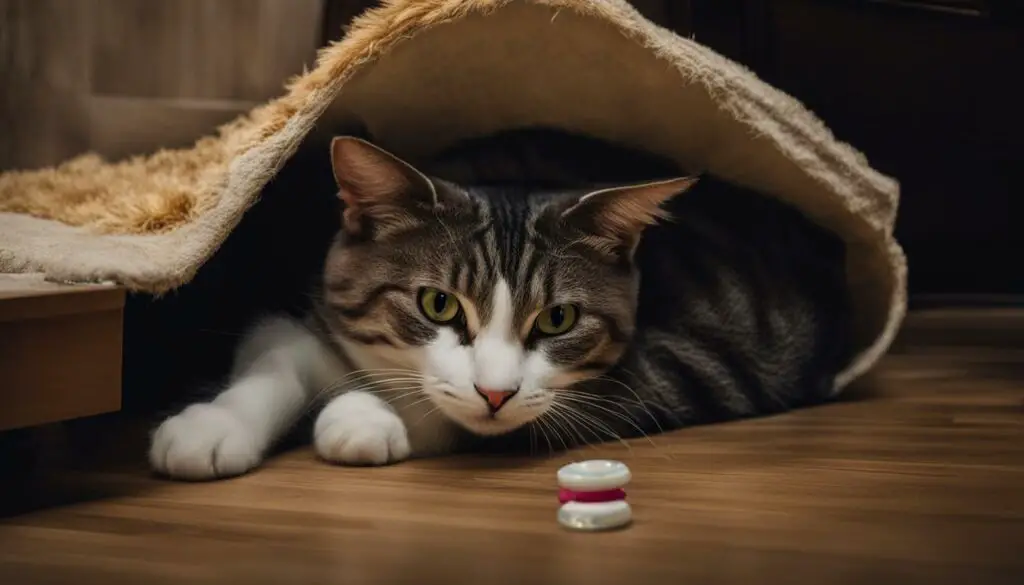
In conclusion, managing stress and anxiety in indoor cats is crucial for their overall well-being. By creating a stimulating environment, providing safe spaces, and utilizing calming products and techniques, we can help our feline companions live happier, healthier lives.
The Importance of Regular Veterinary Care for Indoor Cats
As a cat owner, I understand the joys and responsibilities of having an indoor feline companion. While indoor cats may not face the same risks as their outdoor counterparts, they still need regular veterinary care to ensure their health and well-being. Here, I will highlight the importance of veterinary care for indoor cats, covering key aspects such as preventive care, regular check-ups, weight management, dental health, grooming, and more.
Preventive care, including vaccinations and parasite control, is crucial for indoor cats. Even within the safety of our homes, our feline friends can still be exposed to fleas, heartworm-carrying mosquitos, and intestinal parasites. Regular visits to the vet help protect them against potentially deadly viruses such as panleukopenia and rabies. By staying up-to-date with vaccinations and administering parasite controls, we can safeguard our indoor cats from these health risks.
In addition to preventive care, regular check-ups are essential for monitoring a cat’s overall health. During these visits, veterinarians can assess their physical condition, provide valuable advice on behavior, nutrition, and dental care, and detect any potential issues early on. Regular veterinary examinations play a crucial role in maintaining cat health, especially for senior cats who may be more susceptible to certain diseases and conditions.
Proper weight management is another vital aspect of cat health. Obesity can lead to various health problems, such as diabetes and worsened arthritis. By following a balanced diet and incorporating regular exercise into their routine, we can help our indoor cats maintain a healthy weight. Veterinarians can offer guidance on nutrition and create personalized weight management plans tailored to our cat’s specific needs.
In Conclusion
In summary, regular veterinary care is essential for maintaining the health and well-being of our indoor cats. By providing preventive care, regular check-ups, and addressing their unique needs such as weight management, dental health, and grooming, we can ensure that our feline companions lead long, happy, and healthy lives. Let’s prioritize their care and give them the best chance at a vibrant and fulfilling life indoors.
FAQ
Do indoor cats still need to go to the vet regularly?
Yes, even indoor cats need regular veterinary care. While they may not be exposed to certain outdoor risks, they can still be at risk for diseases, parasites, and other health issues. Regular vet visits help ensure their overall health and catch any potential problems early.
What preventive care do indoor cats need?
Indoor cats still need preventive care, including vaccinations and parasite control. They can be exposed to diseases carried by insects and can contract intestinal parasites. Preventive care helps protect indoor cats from potential health risks.
Why are regular veterinary check-ups important for indoor cats?
Regular check-ups allow veterinarians to monitor a cat’s overall health, assess their physical condition, and provide advice on behavior, nutrition, and dental care. Check-ups also allow for early detection of diseases and prompt treatment.
What role do veterinary examinations play in cat health?
Veterinary examinations help detect early signs of diseases, especially in older cats. They also allow for eye examinations and monitoring of specific health conditions. Regular examinations are especially important for senior cats.
How does weight management impact a cat’s health?
Maintaining a healthy weight is vital for a cat’s overall health. Obesity can lead to various problems, including diabetes and worsened arthritis. Proper weight management through diet and exercise is crucial for preventing weight-related issues.
Why is dental health important for cats?
Dental diseases can cause pain and discomfort for cats, affecting their quality of life. Regular dental care, including brushing and professional cleanings, helps prevent dental issues and maintains a cat’s overall dental health.
How does grooming benefit cats?
Regular grooming helps maintain a cat’s skin, coat, and overall cleanliness. It reduces shedding, minimizes hairballs, and allows for early detection of skin issues. Proper care of a cat’s ears and eyes also helps prevent infections.
Why is spaying and neutering important for indoor cats?
Spaying and neutering help prevent certain health issues and undesirable behaviors in cats. Spaying eliminates the risk of uterine infections and reduces the chances of breast tumors, while neutering prevents testicular cancer and reduces spraying and aggressive behavior.
How can I litter box train my indoor cat?
Litter box training is essential for proper hygiene. It involves providing a clean and accessible litter box, placing it in a quiet location, and scooping it regularly. It’s important to address any litter box problems promptly to prevent future issues.
What are the benefits of microchipping my cat?
Microchipping is a reliable method of identification that ensures lost cats can be easily reunited with their owners. A microchip, inserted under the cat’s skin, contains a unique identification number that can be scanned by shelters or veterinary clinics.
Why are regular vaccinations important for cats?
Regular vaccinations protect cats against various infectious diseases. Indoor cats can still be exposed to diseases carried by insects or transmitted by humans. Following the recommended vaccination schedule helps ensure cats have immunity against common viruses.
How does play and exercise benefit a cat’s health?
Play and exercise are vital for a cat’s physical and mental well-being. Regular play sessions and interactive toys help cats stay active, maintain a healthy weight, and provide mental stimulation. Creating an enriched environment encourages cats to exercise and stay fit.
How can I manage stress and anxiety in my indoor cat?
Providing a stimulating environment, using interactive toys, and creating safe spaces can help alleviate stress in cats. Calming products and techniques, such as pheromone sprays, can also help reduce anxiety. Consult with a veterinarian for further guidance if severe anxiety persists.

